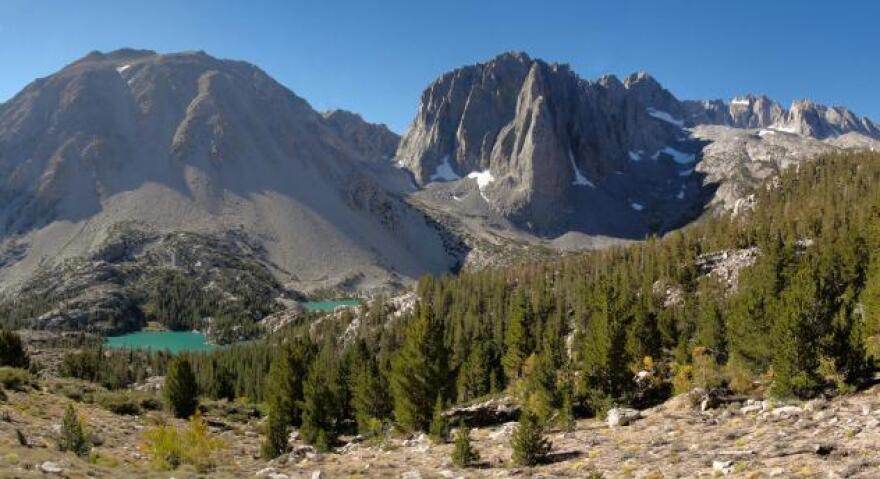You’ve likely heard of the Bermuda Triangle, an area in the Atlantic off the coast of Florida where planes and ships have mysteriously disappeared for decades.
But you might not have heard of the Nevada Triangle.
Yep, we’ve gone one, too.
The Nevada Triangle lies in a region of the Sierra Nevada where some 2,000 planes have been lost – and, of course, spawned speculation about why, how or who has caused their disappearance.
Professor Kelly Redmond, a climatologist with the Desert Research Institute in Reno, has looked at wind formations in those mountains seeking answers.
He will appear on Smithsonian Channel program, "The Missing Evidence,"to talk about his findings.
Redmond told KNPR's State of Nevada that much of the problem in the Sierra Nevada is because of the wind.
The mountain range runs almost perpendicular to the Jet Stream, that along with their shape, which is wedge like, creates wild wind conditions.
"So, when the winds are coming up, they come up kind of smoothly on the west side and then they have this very rapid decent and there is a tremendous amount of turbulence that can be caused by such situations," Redmond said.
He said when a small plane, which must fly lower than commercial jets and doesn't have enough power, gets caught in that air flow it can be difficult to get out.
"It's quite easy for a small plane to get caught in the down draft on the downwind side and not have the power or just the capability to get out of the way of that," Redmond said.
He compared it to getting caught in Niagara Falls. It's believed that is what happened to adventurer and billionaire Steve Fossett, whose small plane crashed after taking off from an airstrip in Nevada in 2007.
Fossett had plenty of experience in aviation. He made a name for himself by solo piloting a balloon around the world and flying many experimental planes.
However, Redmond said that is not always the case and that many smaller planes are piloted by people who have a lot less experience than commercial pilots. As a result, pilot error could be blamed for the hundreds of plane crashes in the area.
Although calling it the "Nevada Triangle," evoking the mystery of the Bermuda Triangle, and its proximity to Area 51, which some people believe the government uses to house UFO's, may create images of paranormal activity, Redmond said its more likely geography and wind patterns are to blame.
"The mountains of the Great Basin and especially in the Sierra Nevada are fairly tall," he said, that along with incised canyons and sharp cliff faces create hazardous flying.
"So, it's quite easy for a small thing such as a light aircraft to get lost in such surroundings," Redmond said.
Professor Kelly Redmond, climatologist, Desert Research Institute









